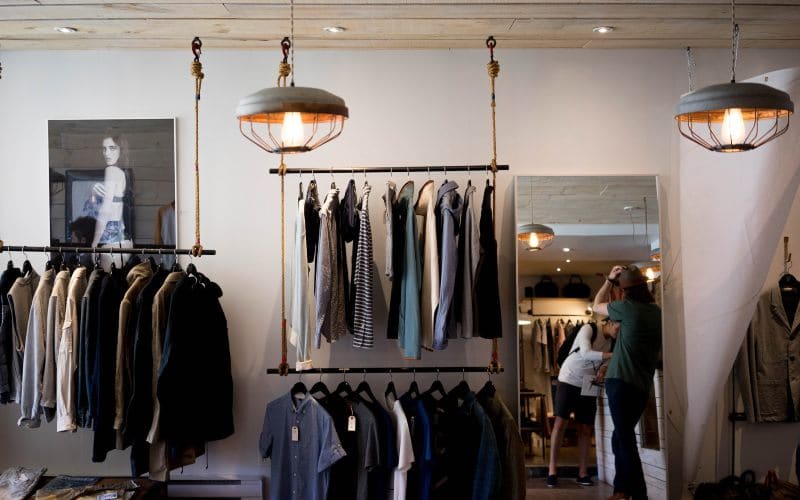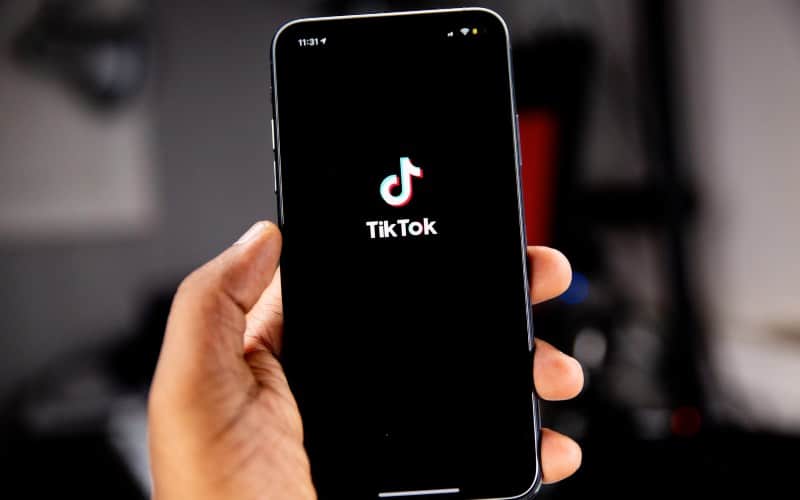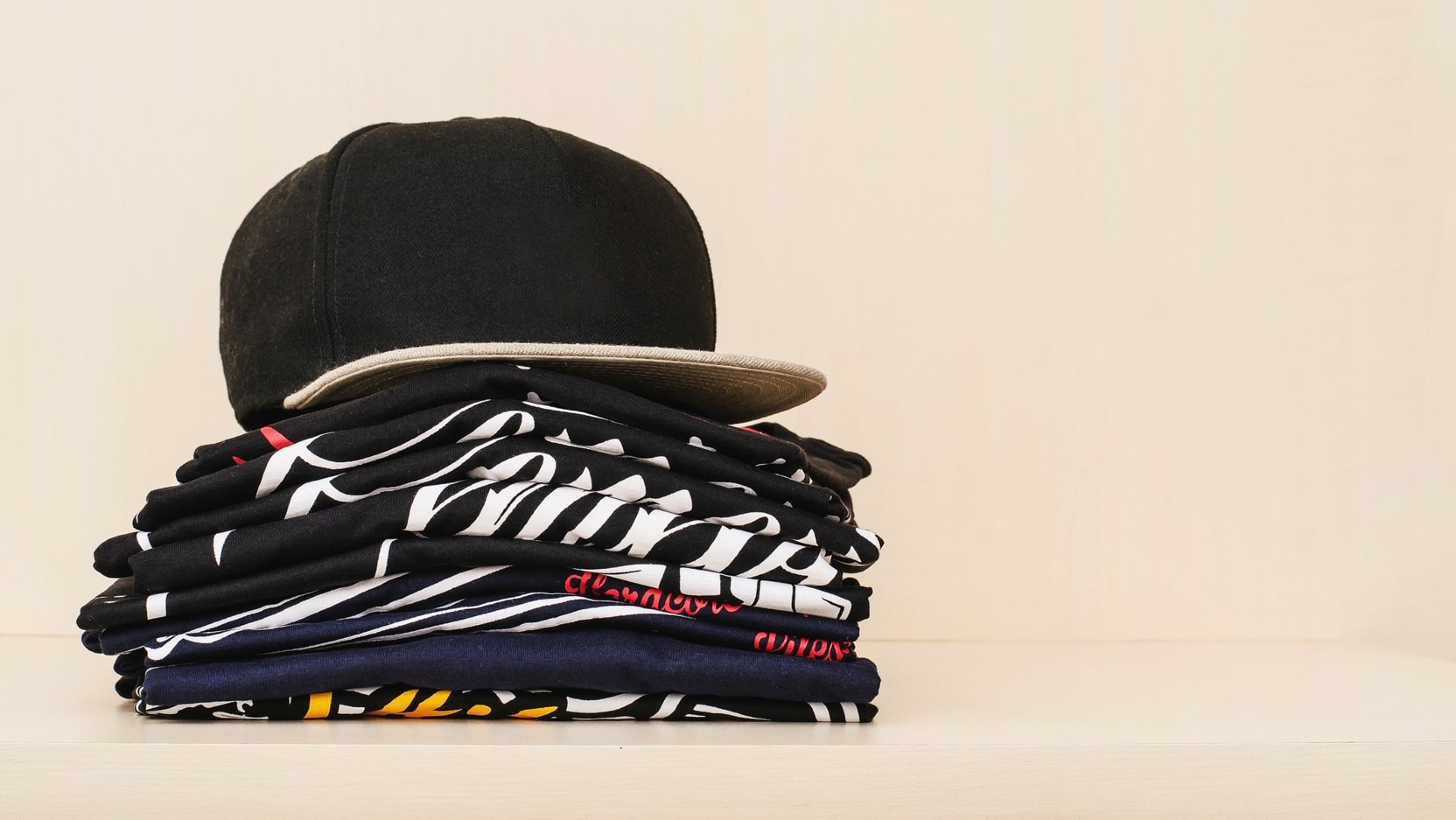In the post-pandemic world, there’s a scramble to learn the new normal. Patterns of behavior will not be quite the same – including consumer behavior. At the same time, online technology has changed. How does this impact the t-shirt biz?
T-shirt business promotion requires brand development, market development, strategic partnerships, and skillful use of online technology. Maintaining a physical presence is key. In 2023, data will continue to be a key performance driver for small businesses, including custom t-shirts.
Research shows that the t-shirt industry is poised for continued growth. We’ll dive through the steps that’ll bolster your business.
T-Shirt Business Market Development
Market development refers to the steps you take to build an audience for your product. This is a two-step process that involves learning your clients and orienting your product towards them. In the absence of that, you end up developing t-shirts in isolation, with a minimal chance that they’ll have a target market with any success.
T-Shirt Buyer Personas
Buyer personas are fictionalized avatars that characterize prospective and active customers. Imagining persons makes it easier to tailor product development, content, and messaging to meet the specific needs, concerns, and behaviors of the people you’re trying to reach.
Depending on the t-shirt niche you’re targeting, you could have up to twenty personas. It’s advisable to start small, personas can also be added or existing ones subdivided as you learn the nuances of how your clients think and feel.
Steps in developing buyer personas are:
- Flexibility: Keep the persona open so that you can amend it as you learn.
- Clustering: Try to slot every existing and prospective customer into a persona. This will guide the accuracy and granularity of your personas.
- Motivation: For each persona, list the factors that motivate action.
- Beliefs: Identify characteristic beliefs of the persona.
- Values: Find out what matters to the persona, including what they aspire to.
- Fears: List the things that the persona seeks to avoid.
Brand Identity
Having personalized your client segment, you would want to position your t-shirts as products appealing to that segment. A key step to this is defining the identity of your product, giving it a set of identifying features. This product persona is known as brand identity.
In personalizing your t-shirt, the brand identity describes what the tees’ values are, how they communicate their values to the client, how people encountering the product are moved to feel, act and think when encountering the product. Ideally, the product will have the most favorable traction with the buyer personas in your target market.
With this in mind, a good way to develop a brand identity is through reverse engineering. Start by listing the feelings, thoughts, and actions that you want to be stimulated – for your buyer personas. Consider design themes and elements that are likely to bring about those effects.
T-Shirt Business: Online Presence

While t-shirt promotion started in the bricks-and-mortar world, the primary point of presence is online. Apart from efficiency and reach, an online presence is ideal for expressing a brand identity.
The elements of online presence are:
We’ll consider each of the five elements below.
T-shirt Website
Websites can be built either from scratch or using templates. Both approaches have pros and cons and will have a different appeal to different people. While the owner will provide the bulk of the media onsite, the website will be more dynamic and attract return traffic if it contains user-created content.
eCommerce Platform Website
The best T-shirt websites are built on platforms like Shopify or Woocommerce. Our favorite is Shopify, so we will discuss those pros and cons below. Here are the advantages and disadvantages:
Pros:
- Flexibility: Shopify eCommerce websites have almost any plug-in imaginable and Shopify developers everywhere can help you create the perfect site for your brand.
- Naming: Your Shopify website domain would be hosted on a domain server and you would “own” the URL.
- Size: Shopify is a great platform that grows with you. You can start really small and inexpensive and scale when you are ready.
Cons:
- Blog: The Shopify blog isn’t as user-friendly as a WordPress blog for creating your content. But it’s not bad.
- Cost: The plugin costs can get pricey if you need a lot of plugins. WordPress plugins are less expensive in my opinion.
Custom eCommerce Website
Custom websites are developed through coding or website development software. There are advantages and disadvantages:
Pros:
- Flexibility: Custom websites place no limit on what content can be provided and how it should be presented.
- Naming: Custom sites are hosted on custom domains, allowing clear expression of the brand’s identity.
- Size: Typically, customs plans have more generous space allocations.
Cons:
- Skill: Custom websites require more skill to construct. If you lack the ability, hiring an online freelancer will help you get the job done.
- Cost: There are costs associated with hosting and maintaining the domain. These usually are small, but they need to be reckoned with.
Template Websites

Sites like Wix provide templates for website building. They are based on the observation that a few generic designs work well for a number of commercial applications. Like custom sites, they have advantages and disadvantages.
We will discuss better eCommerce “website options” down in the Platform section of this article.
Pros:
- Skill: These sights are very easy to cobble together without specialist skills.
- Time: Templates can be instantiated in a matter of minutes.
- Cost: These sights are generally free of charge, with advertising revenue accruing to the host.
Cons:
- Rigidity: These sites are hard to customize. Their sameness makes it harder for you to have a stand-out website.
- Identity: The intrusive advertising can dilute the identity of your t-shirt brand.
- Naming: The prior problem is exacerbated by the practice of hosting your site as a subdomain of the host.
T-shirt Website – Next Steps
User-Generated Content
The most common methods of user-generated content are blogs and discussion boards. Both create a sense of community and encourage users to return as they:
- Diversify and broaden the content available.
- Allow interactive engagement.
- Instantiate the buyer personas in the most direct way possible.
What’s more, this content provides a way of getting feedback, which helps with developing future product lines and refining the brand identity.
Tools like Discus allow the creation of chat forums that can be linked to areas of the website. Blogs allow users to create feature-length content. By curating a series of user blogs, you can build a content center around your t-shirts.
That said, for the next part (SEO) you will want to create your own unique blog content to drive more customers to your website.
T-shirt Search Engine Optimization
If you put in the work, most people will find your website via Google. Search Engine Optimization (SEO) is a set of practices that optimize the chance of your website being more visible in Google and other search engines.
SEO has so many facets. It’s hard for a beginner to grasp. One great resource is the Ecommerce SEO: 2022 Definitive Guide by Brian Dean.
I’ve been doing SEO as a hobby and full-time since 2003. While many things have changed, much has stayed the same. The 2 most important factors you need to focus on are Content and Backlinks. For an eCommerce website, content means product pages and blog posts. You want to write unique product descriptions and write great content that appeals to your target audience. Informational content and list posts (like Top 20 Rock Band T-shirts) are great for driving visitors to your website.
For more advanced SEO, I recommended that you engage an SEO expert (known simply as an “SEO”) to help you with the process. A capable SEO will know the low-hanging fruit available to your brand and will advise you on changes required over time. One of the best eCommerce SEOs I know is Jeff Oxford at 180Marketing.
Online Marketplaces
Online marketplaces provide trusted storefronts through which merchants can provide goods to a global audience. Since these are used for inline referrals, it would be remiss of the contemporary t-shirt vendor to overlook them. The most popular is Amazon and Alibaba.
Amazon

Amazon is the premier business-to-consumer market and should be considered even if you have your own platform. The steps in selling t-shirts on Amazon are as follows:
- Choose a Selling Plan: Two plans are available, one for resellers and one for brand owners. As a brand owner, you’ll opt for the second plan. Amazon has tools to help with brand development on the second plan. Be sure to use them in conjunction with your brand strategy discussed earlier.
- Create an Account: The seller provides a government ID document for setting up an account. This makes Amazon a trustworthy platform, as buyers know that their vendors can be identified.
- Add Products: The t-shirts you wish to sell can be loaded on Amazon under the “Clothing and Accessories” category. This does not require a Professional license. If you sell other merch, be sure to consult the category guide for appropriate loading.
- List Products: Products for sale need to be marked with stock keeping codes (SKUs) and other identifiers to make them uniquely identifiable in transactions.
- Grow Customers: The Amazon Flywheel provides a guide to fast shipping and customer experience elements to make your product stand out from its peers. This is a key part of growing the market for your t-shirt business. Customer reviews are a key part of how your brand is viewed in the public eye, and Amazon reviews are sought-after product guides today.
Etsy

Etsy is the global marketplace for unique and creative goods. This is my favorite online marketplace to sell t-shirts, hands down. The steps in selling t-shirts on Etsy are as follows:
- Create an Account: Got to Etsy.com. Click on the “sell on Etsy” link and follow the instructions to open your Etsy shop.
- Add Products: The t-shirts you wish to sell can be loaded on Etsy by manually creating a product, or by linking your Etsy account to a print on demand supplier like Printify or Printful.
- Optimize Products: Etsy is a fantastic place to sell t-shirts. To get your designs in front of customers you need to use good keywords in your listing titles. Don’t stuff words there. But make sure you use a keyphrase that someone would type in if they are looking for your design.
- Grow your Store: The key to Etsy is increasing the number of high quality items you have in your store. To get sales and visibility on Etsy you may first need to spend a few bucks a day on Etsy ads. Once you get some sales and reviews on your products, the Etsy algorithm will kick in and start showing your products to more people organically.
Social Media
Open an account for your t-shirts on each of the leading social media platforms. These would include Instagram, TikTok, WhatsApp, and Facebook. Remember that Youtube is the second most referenced search engine, and a presence there will give you a wide opportunity to talk around the themes that hold the interest of your buyer base.

Instagram is a particularly effective platform for promoting t-shirts. It has a wide following and is based on visual presentation. The tagging features of Instagram make it useful for building community interest around your tees. The following steps will guide you through an effective campaign:
- Schedule promotion dates: Rather than a one-off posting, create rolling interest with staggered announcements. Linking the campaign to parallel events that appeal to your target creates leveraged interest.
- Design Visual Content: Instagram is based on eye candy. Your t-shirts will be at the center of the campaign, but the presentation should always be geared towards creating art around the showcased item rather than a bland, catalog-style photo. Look to trending Instagram campaigns for an idea of the visual standard.
- Pick a Catchy Hashtag: The hashtag will feature in searches and should uniquely link back to your t-shirts. Ideally, design the promotional campaign name to be an available Instagram hashtag, making for memorable, professional-looking content.
- Make a Clickable URL: Instagram does not permit clickable URLs in photo captions. The place to store that is in your profile. The caption might then refer users to the link in your profile. Adjusting the URL is then a simple case of altering profile settings.
- Narrate With Instagram Stories: Instagram Stories allow the insertion of promotional videos. These videos appear at the top of the feed, making them perfect for introducing unity to the images that follow. They are an opportunity to explicitly narrate what the images convey.
- Leverage Virality: Instagram supports feedback links. By getting your customers to send their pictures relevant to your campaign, you open the possibility for user-generated content, which drives interest. What’s more, at some point, happy purchasers of your tees will post, creating an encouraging community feel.
As you use the platform, you will have more of a feel of how to tweak Instagram campaigns to work for you.
TikTok

This platform has grown a massive following in a short time, with users enjoying the short, often humorous videos that prove highly viral when they hit the spot. There are two kinds of TikTok campaigns:
- Direct campaigns speak to your product directly. They may be behind-the-scenes looks at the design process, which can be very effective in building affinity with the brand.
- Placement campaigns use your tee-shirts as props. If you’re making shirts for skaters, you might shoot stunts at a local park featuring skaters wearing your gear. Your t-shirts might even feature in skits that have nothing to do with your product but could have a high viral impact on your target audience.
Brandambassador
This is a relatively new app that marshals users to promote your t-shirts globally. It is a highly scalable platform that allows you to build an army of thousands of promotors who punt your brand in expectation of bonus points and cash rewards, all in a gamified context.
If your t-shirts target a younger audience, this can be a particularly novel way to go about building a peer-to-peer salesforce online.
T-Shirt Business: Offline Presence
While online is the main area of activity, physical presence continues to be the main source of client exposure. Make an effort to find partners who are able to help you gain exposure to physical stores, markets, and shopfronts that are too distant for you to access.
Physical Events
The organizers of conferences, festivals, and other events do not generally plan collateral merchandise. This creates an opportunity, although you might have to persuade the organizers of the value of complementary merch.
Market Sales
Craft and pop-up markets create a sense of excitement and community. Try to understand the spirit of each market in order to tailor your t-shirts accordingly. Scour high-population-density locales where your target market is to be found. Finding a freelancer who is able to interface smoothly with that segment will give you a low-cost point of sale in the market.
Shopfront Sales
Shopfronts are mentioned below under “partnerships.”
Content Strategy
While your core business is the production of t-shirts, you want to build a community around that product. These people will generally not be drawn by the opportunity to peruse your products alone but by a material of more general appeal.
A content strategy involves identifying the sort of media that could keep the attention of your audience and then serializing content accordingly. The material should be fresh, unique to your site, and interactive.
Use a blog to build awesome content that is relevant to your customers. Not only do you want to build content for SEO, but also to engage and inform your customers. Use embedded YouTube videos that are relevant to your content. Use original artwork and t-shirt design graphics in your posts.
People love behind-the-scenes content. If you print your own t-shirts in-house, shoot videos and pictures of your process. Share this in blog posts with customers. Use the opportunity to highlight new designs, logos, and more!
T-Shirt Business: Partnerships
A key to leveraging your t-shirt business is to identify and cooperate with strategic partners rather than going it alone. In this way, you derive an advantage from your partners’ crowd-pulling ability.
T-shirt Influencers
Social media influences our content providers who have drawn a large following amongst people whose behavior they are successful in affecting. Influencer marketing is a brand promotion strategy in which the brand owner places products in the influencer’s content. There are three main variations:
- Reviews: Asking the influencer to provide an explicit review or endorsement of your t-shirts. Usually, this will attract a fee.
- Product Placement: Here, the influencer agrees to use your t-shirt as a prop, hanging it visibly, or wearing it. While not explicit, this is effective as followers are sensitive to the context in which the influencers operate.
- Content Production: Cooperating with the influencer in generating content for her platform, you can get a reciprocal exchange in which your t-shirts are presented in the content jointly generated. This is cheaper than outright payment in the first two options.
Partners may be contracted to share in a portion of sales proceeds. In such arrangements, be sure to design a reliable method for attributing the sale to the influencer and convince yourself that the price competes with a flat fee.
Related Products
Inasmuch as your brand identity provides your t-shirts with a personality, other products have a brand ID that compels them to the same buyer personas in the same target segments. This creates the possibility of partnering with compatible products, enticing the client with compatible merch.
Products that have paired well with t-shirts include:
- Leisure Items: Snowboards, motorcycles, and angling equipment are items that lend themselves to t-shirt branding.
- Clothing: Create t-shirts to complement apparel that could be worn together. Shoes, jackets, and pants are likely examples.
- Local produce: Iconic items locally produced and consumed are good to target local consumers.
Consider examples from your own target segments, having an eye on the buyer personas, and what sort of complementary product they might want to pair with a resonant t-shirt.
Events to Promote T-shirts
Similar to product partnerships, events provide opportunities through the presentation of merch. Here your t-shirt might promote the event itself, an element associated with the event (e.g., an exhibitor in the event of a fair), or a theme that is compatible with the event and its target audience.
What makes events particularly attractive is that they tend not to be product-based, whence you do not have to negotiate conflicts of interest. Indeed, providing a product like an appropriately-themed set of t-shirts will more immediately seem like a value-adding proposition.
In this regard, consider not only physical events but also online events. Contact the organizers with mailable content for including your t-shirts on promotional material. Expect a resistance to sharing distribution lists with you, which necessitates handing over the promotional content to the event organizers for distribution.
Partnerships with other Shops
Finally, consider partnerships with other shops. This would include bricks-and-mortar shops as well as online shops.
Your foray into online shops will include perusing shops that may be of interest to your target audience. Generate proposals for product combinations and reach out to the product owners. Here, having a presence on one of the platforms mentioned above can be a plus, as you can offer to include the partnered products on your shopfront.
Traditional offline shops have consignment models that have been tested over time. This is the easiest inroad, and you should do research into participation rates for commissioning shops.
T-shirt Sales Data
One of the plusses of online portals is the rich transactional data that they provide. Studying this data in the light of your t-shirt transactions (not merely sales, but all transactional contact, including inquiries) gives an indication of how your t-shirt performs in contact with clients and consequently how this performance can be improved.
T-shirt Loyalty Programs
Loyalty programs are a rich source of data, as customers volunteer to provide rich transactional data in order to participate in the rewards on offer. Ensure that your promotional efforts are underpinned by a loyalty program that records and provides this data.
Conclusion
By understanding your target market and tacking your brand accordingly, you’ll be in a position to develop online artifacts and a physical presence that drive interest in your product. With the right technical execution, interest will be followed by sales.
Bryan E. Robinson is the former owner of TshirtGrowth. He has sold t-shirts since 2006 through dropshipping, screen printing, vinyl printing, DTG, Print on Demand, and more. Bryan has created his own t-shirt designs through Photoshop, Canva, and other platforms, as well as worked with freelancers to create many of his designs. Besides t-shirts, Bryan has over 18 years of experience in online marketing with eCommerce, B2B SaaS, B2C products, and more.


